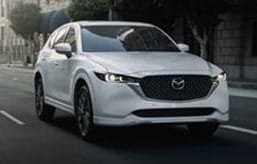- Increased battery capacity adds extra driving range.
- Standard NACS charging port allows for access to the Tesla Supercharging network.
- Restyled front and rear bumpers along with tweaks to interior design and features.
2025 Hyundai Ioniq 5 First Drive: Small Tweaks and One Major Change
Hyundai is not content to leave well enough alone
When it debuted in 2022, the Hyundai Ioniq 5 made an immediate impact on the EV scene. Its combination of retro-inspired design, excellent value and impressive real-world range earned it an Edmunds Top Rated award in 2023. Available in standard and long-range models with either rear- or all-wheel drive, the Ioniq 5 has been both the first EV for many buyers as well the choice for seasoned EV owners. For 2025, Hyundai has a few key updates as well as some small tweaks in store for their EV leader.
Minor changes add up
As with any refresh, there are some subtle exterior styling tweaks to the 2025 Ioniq 5. Both front and rear bumpers have been redesigned as has the rear spoiler. Hyundai has also dropped a new wheel design, added more aerodynamic roof rails and, as a direct result of customer feedback, added a rear window wiper. You can also get the Ioniq 5 in some new matte colors for 2025: Atlas White, Ecotronic Gray, and Celadon Gray. It's hard to call those colors, but at least they're new.
Inside, the Ioniq 5 sports new climate controls, a fresh steering wheel design and a new center console with physical buttons for things like the heated seats. The previous dual 12-inch screens have been enlarged to 12.3 inches, wireless Android Auto and Apple CarPlay are standard and extra USB-C ports have been added.
Underneath the body sit batteries with added capacity. Standard Range models jump from 58 to 63 kWh while Long Range models bump up from 77.4 kWh to 84 kWh. As expected, with that added capacity comes added range. Standard Range rear-wheel-drive models are now estimated to reach 245 miles of range (up from 220), while the Long Range rear-wheel-drive models get a boost to 318 miles (up from 303). All-wheel drive Ioniq 5 models are available only with the Long Range battery jump from 260 miles to 290 miles depending on wheel and tire sizing. Remember, big wheels might look cooler, but smaller diameter, narrower wheels give you better range.
Perhaps the most significant change for the 2025 Ioniq 5 is the addition of a NACS charging port. Made popular by Tesla and its vast Supercharger network, the Ioniq 5 is the first non-Tesla to get one as standard equipment. The allows the Ioniq to plug right in to over 17,000 Superchargers without an adapter, but Hyundai will give adapters to current Ioniq vehicle owners (including the original Ioniq hatchback!) allowing them to plug in. Current and upcoming Ioniq models will all use NACS charge ports.
Why mess with a good thing?
From behind the redesigned steering wheel, only current Ioniq 5 owners are likely to notice any differences. Of the two 12.3-inch displays, the touchscreen has a faster CPU, freshened graphics with increased levels of customization, and the navigation system is more accurate. Fun fact (for nerds like us), the four dots on the steering wheel are the Morse code signal for the letter H. And for 2025, they light up when you make changes to settings like the drive modes.
The Ioniq 5 continues to be spacious, comfortable, and one of the easiest EVs to drive around town or on the highway. The four regeneration settings, selectable with steering wheel paddles, offer drivers just the right amount of throttle control for their given driving situation, and we're happy to see Hyundai hasn't really made any changes to the way the Ioniq 5 drives.
Just plug it in anywhere
As mentioned, the Ioniq 5 can now easily use Tesla Superchargers when it comes time to add some juice, although heading to a charging station that uses a CCS charging system — stations like Electrify America, ChargePoint, EVgo and others — still proves to be a bit quicker. Currently, the V3 units at a Supercharging station max out at 135 kW, but the Hyundai says the Ioniq 5 has a max charging capability of 257 kW, making a DC fast charger of 150 kW or more the quicker option.
Hyundai estimates that when plugged into a Supercharger, the Standard Range Ioniq 5 can charge from 10% to 80% in 24 minutes while the Long Range model can do the same in 30 minutes. For comparison, when using a CCS adapter, both the Standard and Long Range models jump from 10% to 80% in 20 minutes, with the Long Range really being able to take advantage of its faster charging capability. In fact, the dual-motor Ioniq 5 is at the sharp end of the Edmunds EV Charging Test, making it one of the easier cars to use on longer road trips.
Prices for the 2025 Ioniq 5 start at $43,973 for the rear-drive only Standard Range model and go all the way up to $59,575 for the loaded-up all-wheel-drive Limited model.





 by
by  edited by
edited by